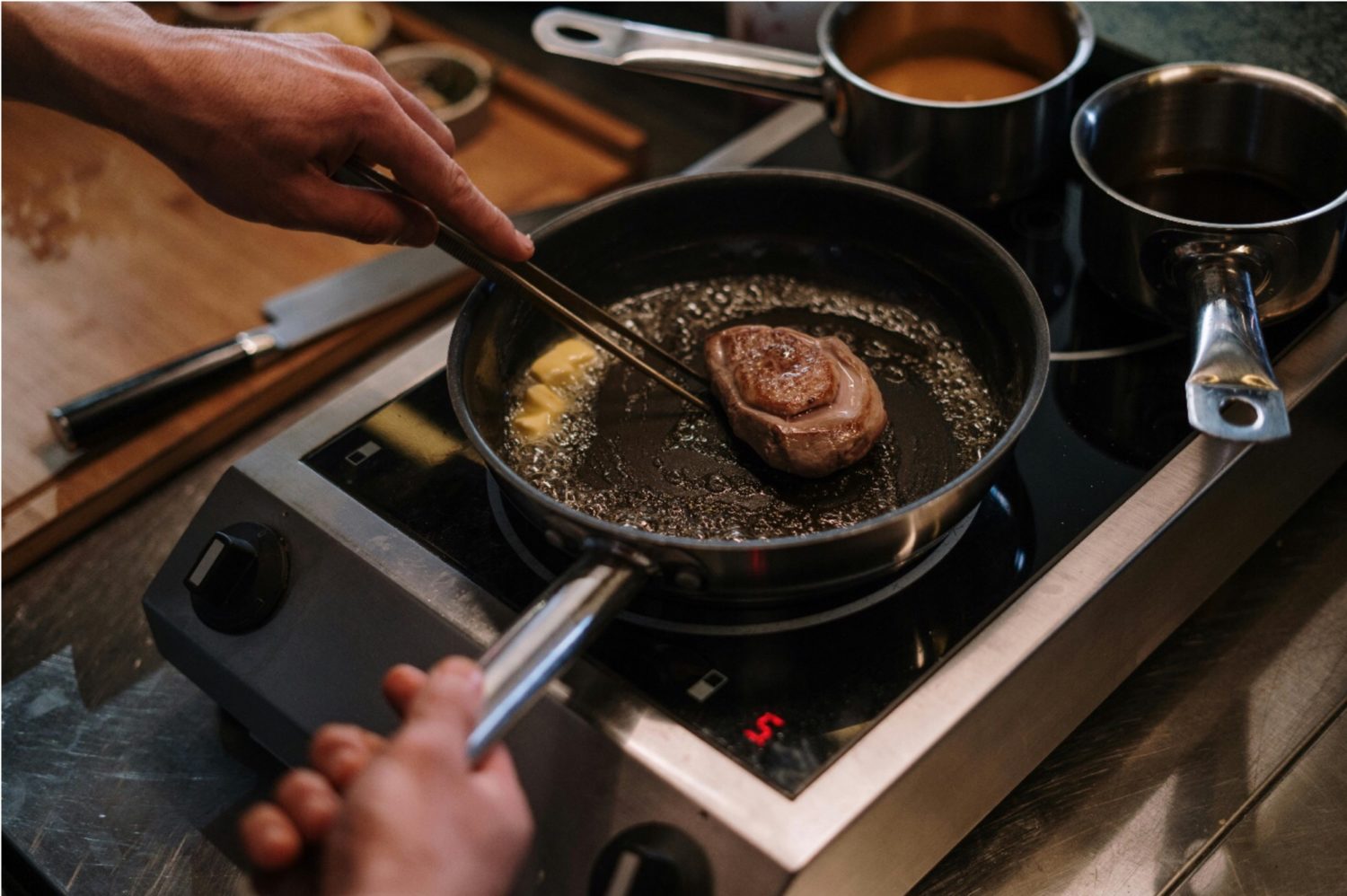
Have you ever stood over a grill or stovetop, wondering if your steak will come out just right? Cooking steak can feel intimidating, especially when you want that perfect balance of a flavourful crust and a juicy centre. Whether you’re a seasoned home cook or just starting your culinary journey, achieving steak perfection requires the right techniques and a bit of practice. The good news? It’s not as complicated as it may seem.
In this blog, we will share essential methods and tips to help you master the art of cooking steak. Let’s dive in and explore the secrets behind creating a steak that impresses every time.
1. Choosing the Right Cut
The journey to a perfectly cooked steak begins with the cut of meat you choose. Each cut offers a different flavour, texture, and cooking requirement. Popular choices include ribeye, sirloin, filet mignon, and porterhouse. Some cuts, like ribeye, are rich in marbling, giving them a tender texture and bold flavour. Others, such as filet mignon, are leaner and known for their delicate bite.
When selecting a steak, look for bright red meat with some marbling. The marbling melts during cooking and adds richness to the steak. If you’re unsure which cut suits your taste, consider experimenting with a few different options to find your favourite. Always buy from a trusted source to get high-quality meat for the best results.
2. Preparing Your Steak
Preparation is key to cooking a great steak. Put the meat in room temperature for approximately thirty minutes before cooking. This helps it cook more evenly. Season the meat with salt and pepper as per taste. These simple seasonings enhance the natural flavour of the beef.
If you’re looking to try something more advanced, consider sous vide. This technique cooks steak evenly by sealing it in a bag and immersing it in a water bath at a controlled temperature. For example, if you’re wondering how to sous vide porterhouse steak, it’s straightforward. Set the water bath to your desired doneness level, seal the steak in a pouch with seasonings, and let it cook slowly. This method ensures tenderness and perfect doneness every time.
3. Using the Right Cooking Tools
The tools you use can make or break your steak. A heavy-duty skillet, such as a cast iron pan, works well for stovetop cooking. It retains heat and gives the steak a nice sear. If you prefer grilling, make sure the grates are clean and preheated.
Investing in a meat thermometer can also improve your results. This tool removes the guesswork, helping you achieve the exact doneness you want. Rare steaks are usually 125°F, medium-rare around 135°F, and medium closer to 145°F. Cooking by temperature, not time, leads to more consistent results.
4. Mastering the Sear
A proper sear adds flavour and texture to your steak. Start by heating your pan or grill until it’s very hot. Add a bit of oil with a high smoke point, like canola or avocado oil, to prevent sticking. Once the oil shimmers, place the steak in the pan without moving it.
The goal here is to create a crust. Let the steak cook undisturbed for a few minutes before flipping it. A deep, golden crust locks in the juices and provides a satisfying bite. After flipping, cook it to your preferred doneness and avoid poking or cutting into the steak while it’s cooking.
5. Resting Your Steak
Resting your steak after cooking is a step you should never skip. Once you remove it from the heat, let it sit on a cutting board for about 5-10 minutes. This allows the juices to be redistributed, making every bite flavourful and moist.
If you slice the steak immediately, the juices will spill out, leaving it dry. Use this resting time to prepare any side dishes or sauces you’d like to serve alongside your steak. Once it’s rested, cut the steak against the grain for the most tender bites.
6. Adding Finishing Touches
Finishing touches can elevate your steak from good to restaurant-quality. A pat of compound butter flavoured with herbs and garlic adds richness and a hint of freshness. Drizzle some olive oil or sprinkle flaky sea salt on top for added flavour.
You can also pair your steak with a simple sauce, like chimichurri or a red wine reduction. These accompaniments enhance the steak’s natural flavour without overpowering it. Experiment with different garnishes and sides to find combinations you enjoy.
7. Avoiding Common Mistakes
Many steak-cooking mistakes are easy to avoid once you understand what to watch for. One of the most frequent errors is overcrowding the pan. When you place too many steaks or pieces of meat in the pan at once, the heat gets distributed unevenly. This causes the steak to steam instead of searing, which prevents the flavourful crust from forming. Always cook in small batches, or use a larger cooking surface to give each piece of steak plenty of room.
Another common mistake is using low heat. Steak needs high heat to develop a good sear and cook evenly. If the pan or grill isn’t hot enough, the outside won’t caramelise properly, and the inside might overcook before you achieve the right crust. Preheating your pan or grill thoroughly is a simple but crucial step for great results.
In conclusion, cooking steak perfectly doesn’t require fancy tools or years of training. It’s about understanding the basics, being patient, and practicing. Now that you know the secrets to cooking steak, it’s time to try these methods yourself. Whether you’re hosting a barbecue or preparing a special dinner, the skills you’ve gained will help you create a steak that delights every time. The perfect steak is not just a meal—it’s an experience worth savouring.







